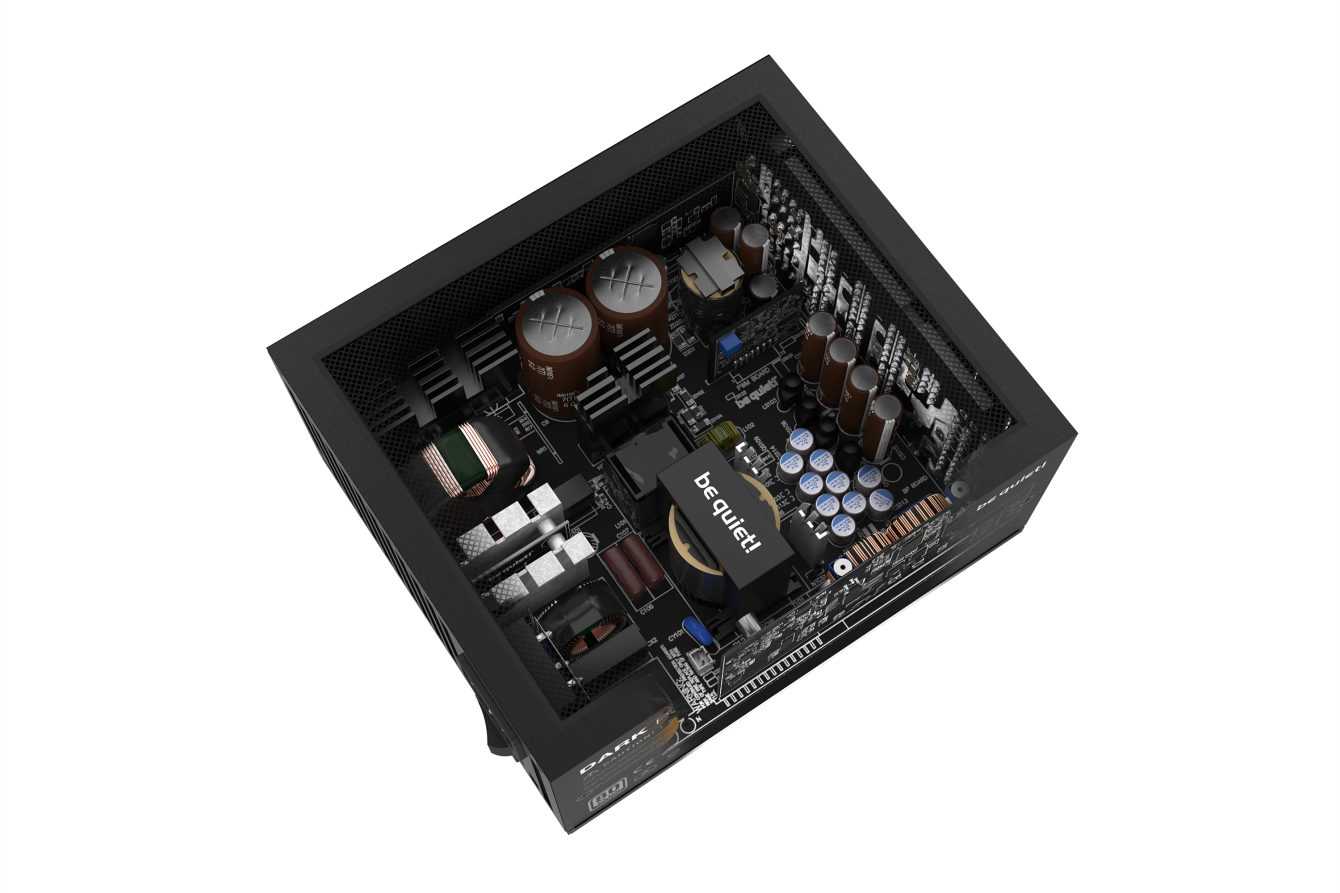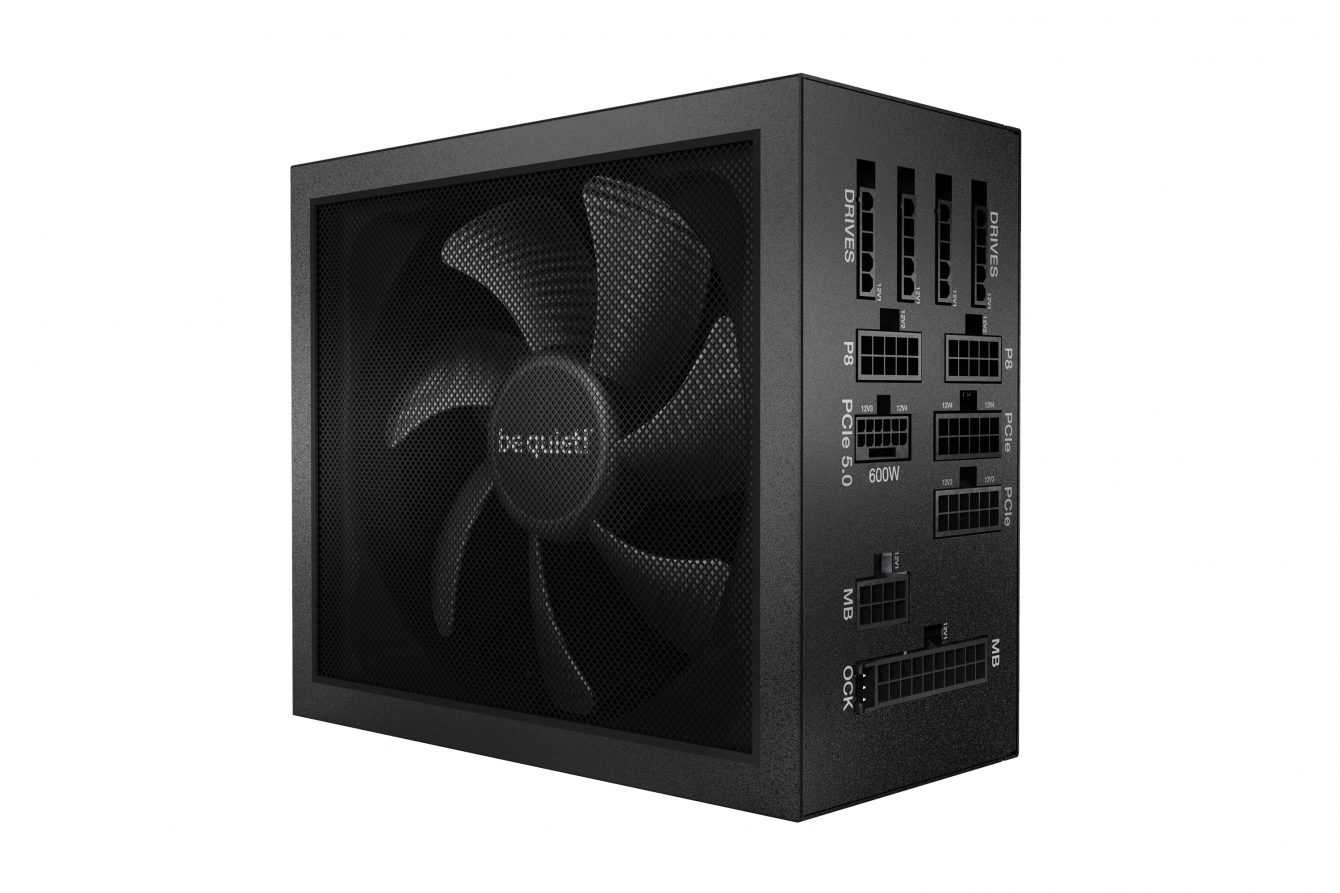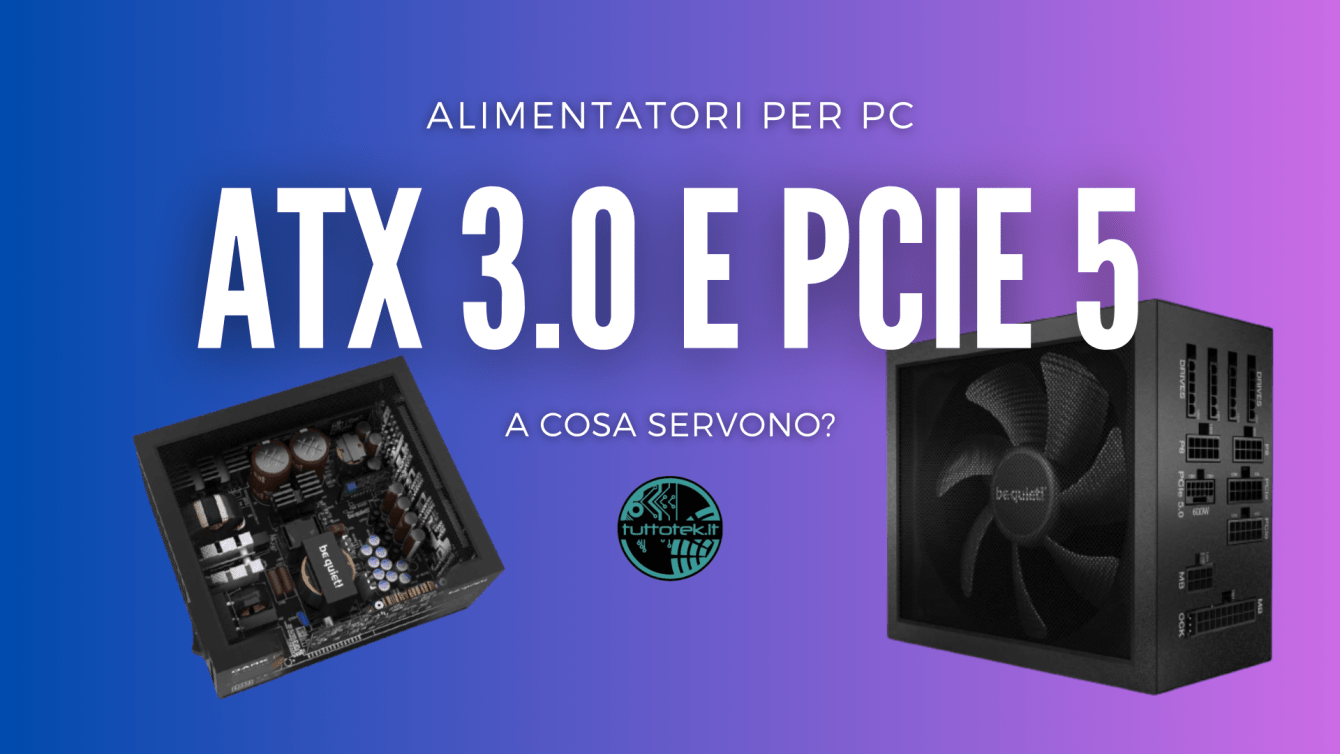In this article we will see what ATX 3.0 and PCIe 5 technologies specifically are in the new types of PC power supplies
Technologies are advancing rapidly in the world of PC building, and two prominent innovations are shaking up the power supply industry: ATX 3.0 e PCIe 5. These new technologies aim to meet the needs of next-generation builds, offering more powerful and reliable power.
ATX 3.0: a step forward compared to the past
ATX 3.0 represents the evolution of the ATX standard, which establishes the technical characteristics of computer power supplies. What’s new in ATX 3.0 includes the support for 12VHPWR connector, a crucial innovation. This 16-pin connector offers more powerful and efficient power to graphics cards, reaching a maximum power of 600W, compared to the previous 288W of PCIe 8-pin standards and 150W of PCIe 6-pin.
Another highlight of ATX 3.0 is the definition of target values above the rated power. This means that PCIe connections for graphics cards are now capable of handling load variations up to three times the energy consumptionsignificantly improving the reliability and stability of the systems.

PCIe 5: speed without borders
Moving up to PCIe 5, this new version of the PCI Express standard redefines the technical specifications of connections for graphics cards and other expansion devices. The major milestone of PCIe 5 is the data transfer speed reaching 64 GB/sdoubling the capacity of its predecessor, PCIe 4.0, which stopped at 32 GB/s.
Key differences and advantages compared to previous standards
The main divergences between ATX 3.0, PCIe 5 and their predecessors focus on power, efficiency and reliability. Both offer a higher power than previous standards: ATX 3.0’s 12VHPWR connector reaches 600W, while PCIe 5 offers double the data transfer speed of PCIe 4.0.
But it’s not just a question of power. ATX 3.0 and PCIe 5 are designed to be more efficient, reducing power losses. ATX 3.0’s 12VHPWR connector uses a more efficient design, while PCIe 5 offers faster data transfer speed with the same amount of power, promoting energy efficiency.
Setting higher target power ratings in ATX 3.0 also improves reliability, allowing PCIe connections to manage significant load variations without compromising system stability.

What are ATX 3.0 and PCIe 5 technologies used for in a power supply?
The practical advantages of these new technologies are many. ATX 3.0’s 12VHPWR connector provides more powerful and efficient power to graphics cards, allowing the use of more advanced GPUs. PCIe 5, with its doubled data transfer speed, offers faster and smoother response, ensuring a seamless gaming and working experience.
ATX 3.0 and PCIe 5 represent a significant turning point in the world of PC power supplies, bringing with them tangible benefits in power, efficiency and reliability, and paving the way for new possibilities in next-generation PC configurations.
We invite you to follow the pages of techgameworld.com to stay up to date on the 360° world of technology!
















Leave a Reply
View Comments